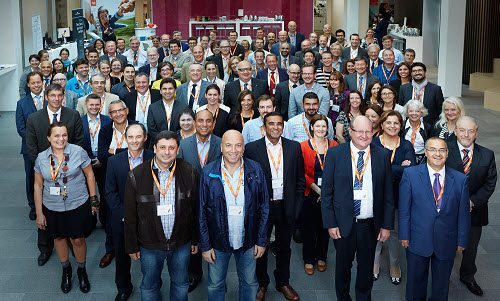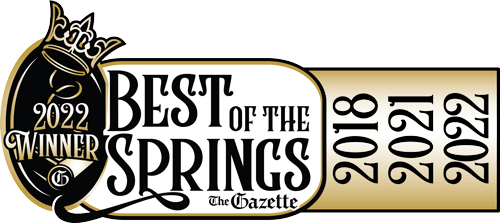The annual Oticon Medical Scientific Meeting creates a unique opportunity for clinicians, researchers and thought leaders in otology/neurotology and audiology to exchange knowledge, expand networks and gain inspiration on the newest advances in hearing implants. This year, more than 90 prominent professionals representing 23 countries participated in Oticon Medical’s fourth annual scientific meeting held at Oticon Medical headquarters in Copenhagen. The three-day conference combined scientific presentations, lectures and roundtable discussions with more focused programs concentrating on audiology and surgery.
“Oticon Medical has set an ambitious goal for the future: To become the world’s leading hearing expert in implantable hearing solutions,” said Oticon Medical President Jes Olsen. “With that ambition comes a responsibility not only to patients but also to support the surgeons and audiologists who are so essential to creating lifelong patient outcomes. Through our annual Scientific Meeting and other professional forums, we aim to stimulate knowledge-sharing that will enable clinicians to acquire new competencies, skills and theoretical foundations that have the potential to increase patient acceptance and satisfaction now and in the future.”
More than 90 prominent professionals representing 23 countries participated in Oticon Medical’s fourth annual scientific meeting held at Oticon Medical headquarters in Copenhagen.
In the opening session, participants were introduced to the Neuro System, the first cochlear implant system from Oticon Medical. The new CI system consists of the ultra-compact Neuro Zti implant, an innovative, future-proof technology platform that delivers the smallest surgical footprint in the industry, and the Neuro One sound processor, built on Oticon’s powerful Inium processing platform. Professor Christophe Vincent, head of the ENT, Head and Neck Surgery Department at Lille University Hospital, France showed the surgical procedure and intraoperative measures and shared first surgical impressions.
Robert Stokroos, MD, PhD of the Cochlear/Auditory Brainstem Implant team Zuid Oost Nederland, shared findings of the first randomized control clinical trial of the Minimally Invasive Ponto Surgery
(MIPS). The new technique is a refinement of bone anchored hearing surgery for use with the Ponto System. Dr. Stokroos reported that the trial demonstrated that the new MIPS technique minimizes post-op complications and delivers more improved cosmetic outcomes compared to earlier techniques. With no need for sutures, and therefore no incision scar, the single-stage MIPS technique further improved surgery times.
Bo Håkansson, PhD, Professor at Chalmers University of Technology, Gothenburg, Sweden, presented an update on an ongoing clinical study of the Bone Conduction Implant (BCI), a miniaturized implantable transducer that uses a flat surface attachment to the temporal bone.
Ida Institute Learning Specialist Ena Nielsen, PhD discussed the “Successes, Gaps ad Challenges in CI Rehabilitation” as they relate to children and their families on the cochlear implant journey. Through ethnographic videos, Dr. Nielsen illustrated the essential touch points between patient and professional, which aspects of current care work well, and where the critical gaps and challenges may be.
Hands-on demonstrations of the MIPS surgery technique and CI insertion with the Oticon Medical Neuro Zti rounded out the day for the surgeons.
The Audiological Session approached advances in bone anchored and cochlear implants from the audiologist’s perspective.
The implications of skin drive and direct drive bone anchored solutions on speech intelligibility, sound quality and audibility were discussed by Darren Whelan, MSc of South Tees Hospital NHS Foundation Trust. The study compared the same device with two types of couplings – fitting on headband and directly via the abutment – where significant differences were shown in all parameters.
Ad Snik, PhD of Donders Center for Brain, Cognition and Behavior, RadboudUMC, The Netherlands, explored factors that impact choice of the best intervention for a patient with conductive or mixed hearing loss including patient’s hearing loss, progression, anatomical and medical condition and preferences.
Kari Morgenstein, AuD, F-AAA, University of Miami Ear Institute, discussed the current management of children with single-sided deafness (SSD) and presented protocols in place at the University of Miami Ear Institute’s pediatric SSD clinic. Dr. Morgenstein noted that although strong evidence exists demonstrating the negative impact of unilateral hearing loss on speech and language development, intervention is often delayed or overlooked in children with unilateral hearing loss.
Preliminary results of an ongoing study of “Auditory Verbal Therapy” were presented by Lone Percy-Smith, MA, Rigshospitalet, University of Copenhagen. The presentation offered insights into the rehabilitation of children with cochlear implants, bone anchored hearing solutions and hearing instruments and introduced the auditory verbal approach.
In her presentation of “Personalized Long-Term Follow-Up of Cochlear Implant Patients Using Remote Care”, Helen Cullington, PhD of the University of Southampton, UK described a long-term follow-up pathway for cochlear implant patients that offered them remote self-monitoring, self-adjustment of devices, and a personalized online or smartphone intervention package for testing their own hearing at home.
In roundtable discussions, participants shared opinions, clinical experiences, ideas and knowledge on cochlear implants, bone anchored surgery, and audiology. A variety of pertinent topics were explored including choice and expanding indications for cochlear implants, hearing preservation, transcutaneous bone anchored hearing systems, and implant and abutment design and surgical and audiological outcomes in BAHS.
Ricardo Bento, MD, PhD of the School of Medicine at the University of São Paulo, Brazil discussed recent advances in cochlear implant technology that focus on the preservation of residual hearing and electroacoustic stimulation (EAS). Dr. Bento noted that surgical technique, place and insertion forces of the electrode-array and design of the electrode-array are the most important factors for residual hearing preservation.
Ravi Sockalingam, PhD, Oticon Medical Director of Clinical Research and Professional Relations, explained, “Our aim is to provide professional forums where the newest data and observations from the clinical world are shared among researchers, thought leaders and most importantly, the clinicians who will bring these exciting new benefits and choices to patients.”
For more information on Oticon Medical implantable hearing solutions visit www.oticonmedical.com




